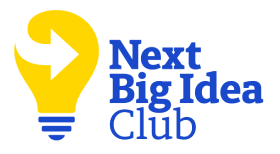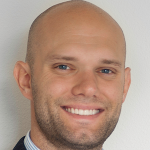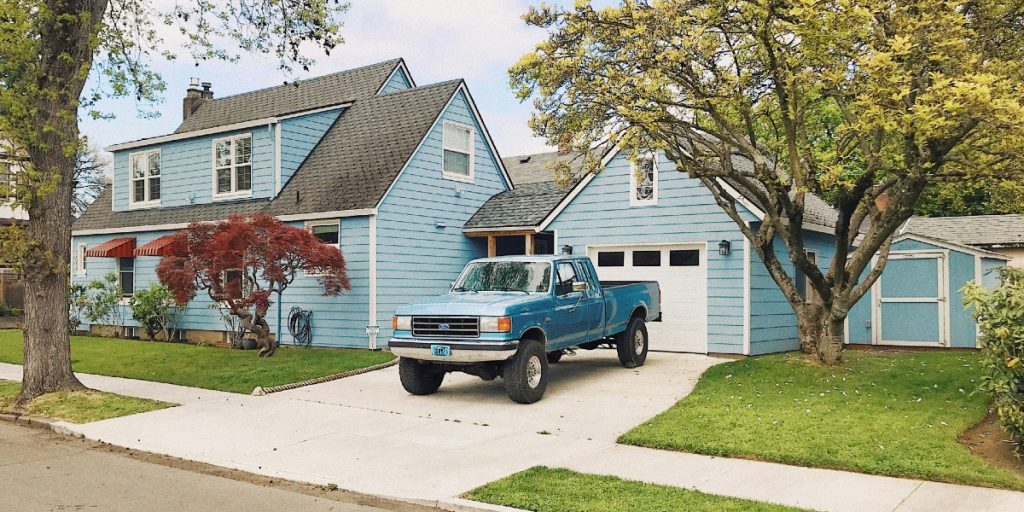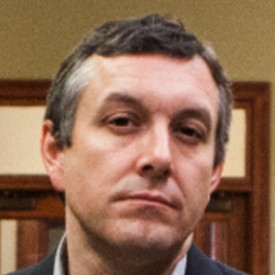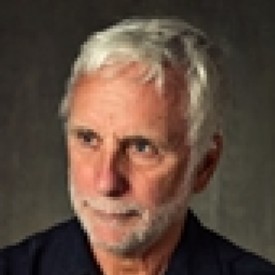David Marquet was formerly captain of the nuclear submarine USS Santa Fe and is the best-selling author of Turn the Ship Around, which tells the story of transforming that submarine from the worst-performing to the best-performing sub in the fleet. Since retiring from the Navy, he has worked with businesses globally as a leadership consultant.
Mike Gillespie is an associate professor of psychology at the University of South Florida who studies how to make organizations more effective. He teaches organizational psychology and directs the Human Applied Cognition and Decision-Making Lab.
What’s the big idea?
Great leaders have a superpower that lets them remove many of their biases, see reality more clearly, and make better decisions: distance. By distancing themselves from situations along the dimensions of identity (what if I were someone else?), place (what if I was in a different position?), and time (what if I was in the future?) they can connect with the essence of what is truly important.
Below, co-authors David Marquet and Mike Gillespie share five key insights from their new book, Distancing: How Great Leaders Reframe to Make Better Decisions. Listen to the audio version—read by David—in the Next Big Idea App.
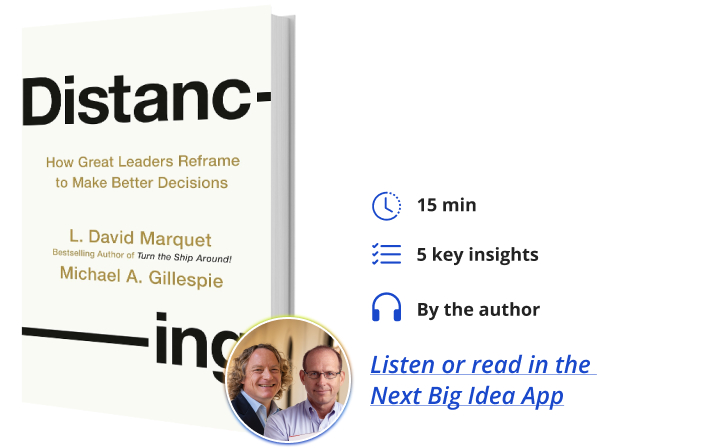
1. We live in a curated reality.
In the early 1980s Gordon Moore and Andrew Grove, who were running Intel, faced a critical dilemma. Intel, founded a decade and a half earlier, was slipping in its original business—memory chips—but had developed a new product, the 4004 micro-processor. The two leaders remained paralyzed for over a year, unable to make the decision to shift the company’s focus to microprocessors because the idea of abandoning memory chips was just too painful.
The breakthrough came when Grove asked Moore a pivotal question: “If we got kicked out and the board brought in a new CEO, what do you think he would do?” Moore replied instantly, “He would get us out of memories.” And so that’s what they did. No new information, no new market updates, no reprocessing of the data. Just a reframe that dropped the accumulated weight of all the decisions from the past and broke through a year of drift.
This sudden clarity emerged because Moore and Grove exited their self-immersed state, where their identity was deeply tied to memory chips. The key to seeing clearly was to look at the situation from the perspective of someone who did not have that accumulated baggage and, even though it was imagined, it worked.
Without our awareness, our brains naturally curate what we perceive and encourage us to protect our image, our sense of self, our precious ego. These so-called self-serving biases distort reality, hinder growth, and result in worse decision-making. Taking on a different perspective is a simple way to shed these biases.
As a nuclear submarine captain, every once in a while, an officer would come to me with a plan that was optimized for their department but not for the submarine as a whole. I would ask them variations of the following: What would you do if you were me? I’d leave them alone for a minute (typically, to get a cup of coffee), and when I came back, they had a new plan. A better plan that was optimized for the submarine as a whole. Again, no new information, no new analysis, just a reframe of the situation from the perspective of someone else.
2. Distance gives better perspective.
As we distance ourselves from something, the details blur, and what’s left is the essence of the thing. If that “thing: is a decision, with distance our brain focuses on what’s important in the big picture and doesn’t get distracted by details that only seem so important in the here and now.
Think about a tree. When standing right next to it, you see ripples in the bark and a beetle crawling up the trunk. You see not just the individual leaves, but the veins in the leaves. Then you start walking back. The bark blurs, and the individual leaves fade. Now you see a tree. You can tell it is an oak tree and discern the shape of its major branches. As you keep moving away, it becomes just a green dot on the horizon. Just a tree. You are down to the essence of the thing.
“The farther you are from the decision, the more your brain sees what matters most.”
Now replace the tree with a decision: What should I major in? Should I attend a conference? Should I get a new job? When should I retire? The same thing happens. The farther you are from the decision, the more your brain sees what matters most.
Distance works whether you physically change your perspective (as in the tree example) or if you imagine a different one. For example, you can become someone else. It also works if you imagine yourself being somewhere else or sometime else. We explore these three dimensions in the book: be someone else, be somewhere else, or be sometime else. This is psychological distancing. With psychological distance, we think about things, ideas, or decisions differently.
Distance changes the way we mentally construe things. The underlying science here is called construal level theory. As things move from closer to farther, our thinking shifts from a lower-level construal—the details—to a higher level of construal—the essence or purpose. Higher levels of construal and the different forms of psychological distance all go hand in hand. This is why it seems normal to say “long ago in a galaxy far, far away,” while “long ago in a nearby galaxy” sounds weird.
Another way of saying this is that at lower levels of construal, we are more concerned with the how of the thing, and as we move away toward higher levels of construal, we think more about the what and ultimately the why of the thing. We move from how to make memory chips to what should we even focus on and why.
3. Be someone else.
A great way to get out of our own head is to be someone else. Going back to the Intel story, we see that by asking “What would our replacements do?” Moore and Grove invoked the “be someone else” dimension of psychological distancing. This is particularly effective if you think your attachment to the current situation is making it hard for you to see reality and alternatives in an unbiased way.
“It does not matter as much who you choose to be so long as it isn’t you.”
We’ve seen people imagine themselves as various different others: their replacement, their boss, their grandchildren, their coach, a good friend, and so on. It does not matter as much who you choose to be so long as it isn’t you. Almost any distancing will work. So, when you have a decision to make, imagine you are someone else. What would that person say to do?
4. Be somewhere else.
We can also mentally teleport to a different location to gain perspective.
William Ury is a Distinguished Fellow of the Harvard Negotiation Project and coauthor of the bestselling book Getting to Yes. In it, he describes the problems that arise from becoming overly immersed in a negotiation. Once we take a position, we argue for it and defend it. We identify with the position and assimilate that position into the image we have of ourselves. That position could be $100 million for a strategic acquisition (and not a penny more!) or the number of inspections a country is allowed to conduct to verify the absence of nuclear weapons. Compromising on our position means giving up a piece of ourselves. Our brains frame it as a personal loss.
In addition to, or even replacing, the original objective of the negotiation, we now have a new objective: saving face. This hijacks our focus from completing the task to protecting our image.
But Ury has a trick to keep himself focused on the task at hand: go to the balcony. In the heat of the moment, he likes to take a pause mentally and imagine he’s on a balcony, looking down at the negotiations, rather than sitting in his chair at the negotiation table. This activates the distancing mechanisms that create a higher construal level, refocusing on the essence of the task.
“We can mentally teleport to a different location to gain perspective.”
So, to gain distance, view the situation from the balcony. Do this in preparation for a stressful event or during a pause in the action. This will keep you on task.
5. Be sometime else.
Mental time travel is another powerful way to gain perspective. When Moore and Grove became their replacements, they also took on a bit of a future perspective—becoming both someone else and sometime else. Becoming a future version of ourselves is a powerful reframe for making better decisions.
Jeff Bezos had to make a tough decision to leave his job to start Amazon. He had a great job on Wall Street, and he went to his boss with his idea to sell books on the internet. This was in 1994. His boss told him it was a great idea for someone who didn’t already have a job, so he should think about it for a couple of days. Bezos then imagined it this way: When I’m 80, what am I going to regret more? Trying and failing or not trying? He imagined himself far from the decision, far from this year’s bonus and next month’s rent.
When you jump to the far side of a decision and look back on it, your brain reframes it in terms of regret, not change. This biases us toward action as opposed to the inertia of the status quo. In the modern world, where change is happening at an unprecedented rate, this reframe often results in better decisions and a more fulfilling life.
So, fast‑forward to the far side of the decision. Imagine you’ve already made it, and events have already unfolded. How did it turn out? How do you feel about the different likely scenarios? Now, what would you choose?
Enjoy our full library of Book Bites—read by the authors!—in the Next Big Idea App:

